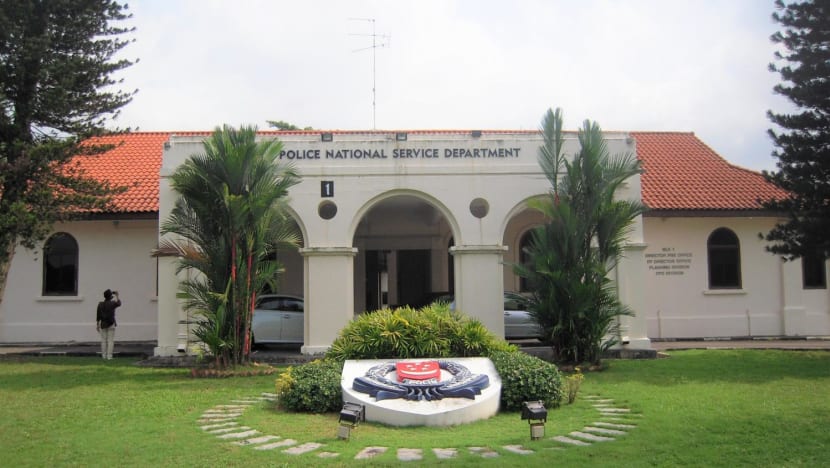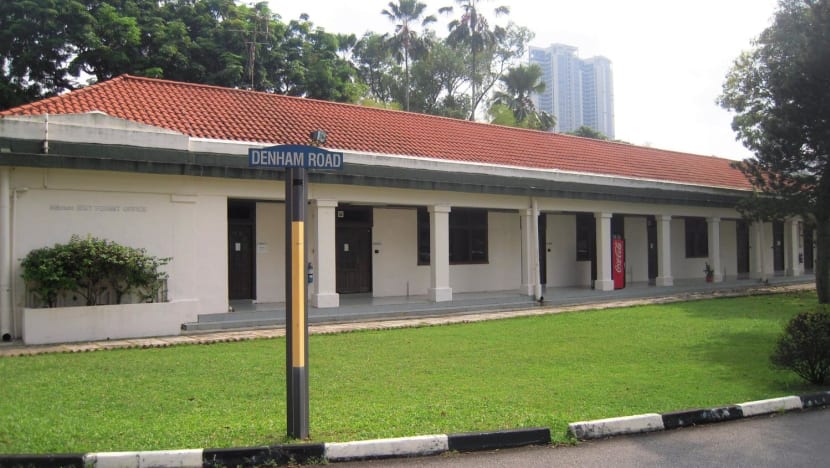New HDB estate with 5,000 flats to be built in Mount Pleasant at Old Police Academy site
- About 5,000 new HDB flats will be built in a 33-hectare housing estate, largely at the site of the Old Police Academy.
- The area's "rich tapestry of nature and heritage" will be woven into the new estate, said authorities.
- Authorities "plan to propose conserving" six buildings from the site.
- Some plans were adjusted based on environmental impact study findings.
SINGAPORE: A new public housing estate with about 5,000 flats will be built in the Mount Pleasant area, largely on the site of the Old Police Academy (OPA) – a development that has been around since the 1920s.
The new 33-hectare estate will be developed to meet strong demand for public housing, with plans to launch the first Build-to-Order project there within the next five years.
This was announced by the Housing & Development Board (HDB), Urban Redevelopment Authority (URA) and Singapore Land Authority (SLA) in a joint release on Tuesday (Nov 23).
The authorities added they plan to propose conserving some buildings from the heritage-rich OPA, integrating them into the design of the new estate which will also pay homage to the site’s history.
This will be done with the help of a new workgroup involving agencies, members of the police fraternity and heritage consultants.
To facilitate the development, a small part of the Singapore Polo Club’s land will also be acquired by SLA.
WHY IS THE SITE IMPORTANT?
Bounded by Thomson Road and the Pan Island Expressway (PIE), the site to be developed – which is about which is about the size of 46 football fields – has been earmarked for residential development since 1998. It is near Bukit Brown and the Central Catchment Nature Reserve.

It includes the OPA, a landmark that was opened in 1929 as the site of Singapore’s first permanent police training facility. It was used for over 80 years, before functions relocated to the Home Team Academy in Choa Chu Kang in 2005.
“It symbolises the transformation of our police training and education – marking the shift away from a wooden and attap temporary site to an institution which has enabled our police to grow and evolve,” said National Development Minister Desmond Lee in a media briefing.
“This history and these shared memories and experiences are important for us to remember and commemorate as a nation.”
To preserve these, authorities engaged stakeholders, including heritage groups and members of the police fraternity.
They also commissioned an independent heritage study – marking the first time such an in-depth heritage study had been done on such a scale, said Mr Lee.
Conducted between August 2018 and September 2019, it helped agencies “better consider the trade-offs” of the proposed plans and develop ways to “sensitively integrate” heritage elements with the new housing estate, said the release.
CONSERVATION EFFORTS
The agencies "plan to propose conserving" six buildings within the OPA, as they are “the most representative of the Police’s historical, social and architectural heritage in the area”.
Four of them, built between 1926 and 1930 as part of the original OPA, are within the boundaries of the new housing estate. These include blocks 1 and 2 – administrative buildings at the original main entrance at Whitley Road.
“They were physical, visual, and symbolic landmarks for trainees, providing the backdrop for parade ground events and graduation photoshoots,” said the release.




Blocks 27 and 28, a pair of colonial-style bungalows used as senior officers’ accommodation, are also on the list. With unique butterfly-shaped semi-detached layouts, they overlook the academy and are visible from the PIE.
“These will be meaningfully adapted for new contemporary uses while retaining the physical buildings. In addition, a part of the parade square will be retained as an open space within the new housing estate,” said authorities.
The other two buildings which authorities "plan to propose conserving" are blocks 13 and 153, both located outside the new housing estate. The former is a “unique building” which was an entry point to the medical centre.
The latter is an art deco bungalow, known as the Senior Police Officers’ Mess (SPOM), which has hosted formal events and celebrations.



For buildings and spaces that cannot be kept, HDB said it will explore various strategies to retain their heritage significance. This includes “referencing their architectural elements” in new developments, or possibly retaining physical elements and incorporating them as street furniture or markers.
To integrate the site’s heritage with the new estate, a new workgroup will be formed, led by HDB and the police.
Involving other agencies, consultants and members of the police fraternity, the workgroup will be chaired by Minister of State for Home Affairs and National Development Dr Muhammad Faishal Ibrahim. They will look at issues such as themes, design and even road names.
CHANGING PLANS BASED ON ENVIRONMENTAL STUDIES
The new estate will sit on a brownfield site – meaning one that has been developed before – and will require “minimal clearance of existing vegetation”.
Nevertheless, an environmental impact study (EIS) was conducted in January 2019 for the area and its wider surroundings, looking at biodiversity and water quality among others.
Nearly 380 plant species were found, close to half of which are native – and of these, half are “of conservation significance”. They were mostly located outside the proposed development area.
Nearly 200 fauna species were recorded, with the highest concentration in the Kopi Sua Cemetery area. Overall, there are 14 species of conservation significance, 10 of which are birds.

After the EIS, HDB engaged nature groups to refine plans to minimise potential impacts to the environment.
In particular, the proposed road network for future residents was adjusted so the surrounding greenery in Bukit Brown and graves at the adjacent Kopi Sua Cemetery would not be affected, said authorities.
Two out of the three streams in the area would also be fully conserved, with the third stream partially conserved, specifically the part which has "richer biodiversity".


The release added that HDB will put in place other measures such as planting more trees along the edge of Bukit Brown to serve as a natural barrier to light and noise.
“We will also phase clearance activities to avoid the bird breeding season, as well as set up tree protection zones to protect large trees.”
An Environmental Monitoring and Management Plan (EMMP) will be in place to monitor and manage any impacts from the infrastructure works.
Both heritage and environmental studies are available on HDB’s website. Members of the public are invited to give feedback on plans until Dec 21.
PART OF SINGAPORE POLO CLUB TO BE ACQUIRED
To facilitate the development, a small land parcel at the Singapore Polo Club (SPC) is being acquired by the Government. Spanning 3,222 sqm, it forms just over 3 per cent of the SPC’s total land area.
A stable, storage shed and sand pit will be affected. SLA gazetted the acquisition of the affected land on Tuesday.
HERITAGE IMPACT ASSESSMENT
Mr Lee reiterated that this project has given authorities an opportunity “to pilot how a large-scale, independent heritage impact study can be conducted and incorporated” into planning processes.
Lessons from this pilot will guide future studies, and ongoing work to develop a heritage impact assessment framework, he said.
This framework will, among other things, provide a guide on when and how detailed heritage studies should be conducted.
“We will give an update on the framework when we’re ready,” he added.
Mr Lee said that as land becomes scarcer and needs continue to grow, balancing land use will become more complex.
“On the Government’s part, we will put out more information on our planning process and decisions and involve more Singaporeans.
“We hope this will help Singaporeans to better understand the trade-offs involved, and work with us … as we mature and develop strategies and measures to strike a balance.”















